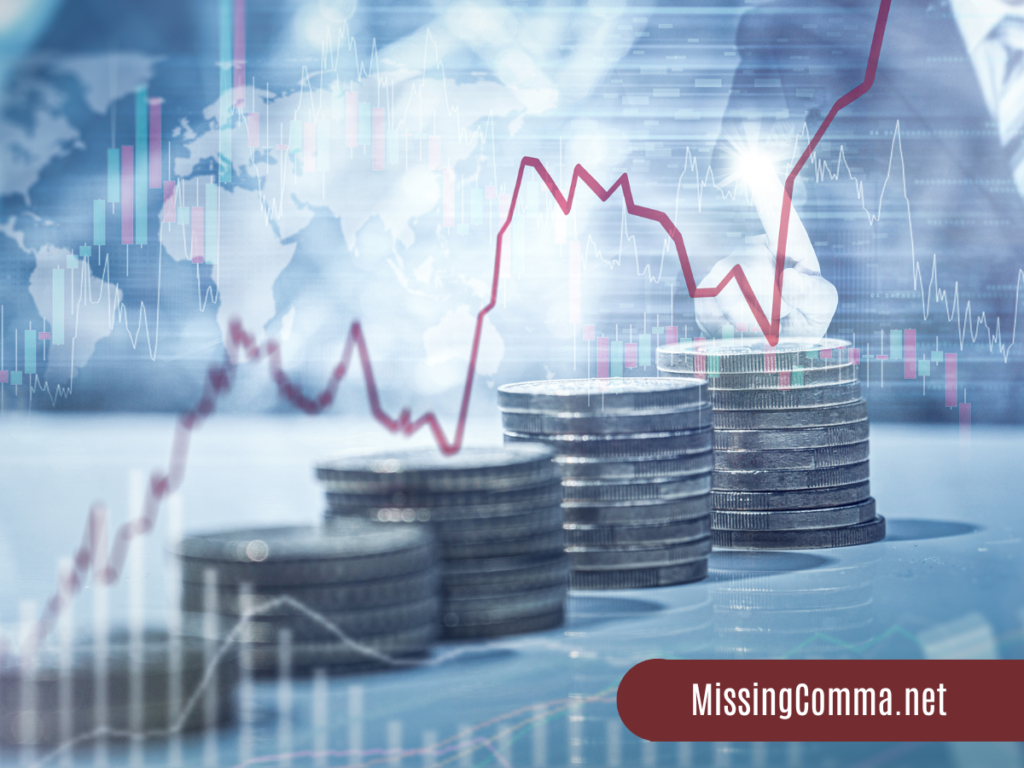Why It’s Important to Develop a Debt Reduction Plan Before Retirement
When you hit 50, your financial landscape starts to change. That’s when it starts to sink in that retirement isn’t a distant dream anymore. it’s actually visible on the horizon. If you’re like I was you’ll find that when this hits you, your priorities start to shift. Especially when it comes to managing debt. If you’re carrying a bunch of debt into your 50s, it’s time to develop a debt reduction plan.
Why Debt at 50+ is Different from When You Were Younger

Once you start getting some grey in your beard, your earning potential may be at its peak, but the window to maximize that income is narrowing. Back when you were in your 30s or 40s, you had time to recover from financial setbacks. You could take on new debt and still have decades to pay it off.
High-interest debt, like credit card balances or personal loans,
can eat into your savings. This in turn screws with your ability to build a solid retirement fund. It’s a big reason so many of us are missing a comma in our retirement portfolios. Carrying debt into retirement will put an unnecessary strain on your finances. It will reduce your quality of life exactly when you should be enjoying your hard-earned freedom.
The Risks of Carrying Debt into Retirement
Carrying debt into retirement is a risk you don’t want. When you retire, your income shifts from a regular paycheck to Social Security plus whatever you can draw from your retirement savings.
Servicing debt on a limited income can be hard.
It’s worse if that debt includes high-interest credit cards or a mortgage.
Without a clear debt reduction plan before you get there, you’ll be dipping into your retirement savings to cover monthly payments.
This will shorten the lifespan of your nest egg.
And what happens if unexpected expenses arise, like medical bills? The combination of debt and reduced income can lead to serious financial stress.
Benefits of Financial Freedom Before Retirement

On the flip side, getting rid of your debt before you retire opens up a world of possibilities. Financial freedom at 50+ means you can fully enjoy your retirement without the burden of monthly debt payments hanging over your head.
It lets you allocate more of your income to the other 6 of the 7 F-words: Faith, Family, Friends, Fun, Freedom, and Fitness (the 7th is Finances).
Being debt-free provides peace of mind. You won’t have to worry about creditors or interest rates, and you’ll have more control over your financial future.
In summary, developing a debt reduction plan for your 50s isn’t just smart—it’s essential. By addressing your debt now, you position yourself for a more secure and enjoyable retirement. The road to financial freedom requires discipline, but the rewards—both financial and emotional—are worth the effort.
Assessing Your Current Financial Situation
Before you can take on the task of eliminating your debt, you need to get a clear picture of where you stand. Think of it like mapping out a road trip: You can’t get from Point A to Point B if you don’t know where Point A is in the first place. Assessing your current financial situation is the first step in creating a debt repayment plan that actually works. Here’s how:
Listing All Outstanding Debts
Start by gathering a complete list of all your debts. This includes everything—your mortgage, credit cards, personal loans, car loans, even medical bills. Don’t leave anything out, no matter how small it seems. Every debt counts, and the more comprehensive your list, the better prepared you’ll be to create a solid repayment strategy.
Evaluating Interest Rates and Payment Terms
Once you’ve listed all your debts, the next step is to evaluate them. Look at the interest rates, payment terms, and any other conditions tied to each debt. This information is useful because it helps you figure out which debts are costing you the most money and should be prioritized in your repayment plan. For example, credit card debt with rare exception carries higher interest rates than a mortgage, making it a prime target to dump first.
Compare Your Income and Expenses
Now that you know what you owe, it’s time to figure out what’s coming in and what’s going out. Yes, this means a budget.
Take a close look at your monthly income and expenses. This includes your paycheck, any side income, and all the usual expenses like groceries, utilities, and entertainment. By analyzing this, you can see areas where you might be overspending and you can find opportunities to free up cash for debt repayment. Every dollar you can redirect toward paying off debt brings you closer to financial freedom.
See the Big Picture
By the end of this step, you’ll have a detailed snapshot of your financial situation. You’ll know exactly how much you owe, what it’s costing you, and where your money is going each month. This clarity is empowering—it’s the foundation of your debt repayment plan and the all-important first step toward a debt-free retirement. With this information in hand, you’re ready to start setting clear, achievable debt repayment goals.
Setting Clear Debt Reduction Goals
Once you have a clear picture of your financial situation, the next step is setting goals. Think of this as plotting your destination on the map. Having clear debt repayment goals gives you direction and keeps you focused. The more specific and realistic your goals, the easier it’ll be to stick to your plan. Here’s how to do it.
Defining What “Debt-Free” Looks Like for You

Before you can make a plan, you need to decide what “debt-free” means in your situation. For some, it’s eliminating everything except the mortgage. For others, it’s wiping the slate completely clean. If you’re 50+, focus on getting rid of high-interest debt like credit cards or personal loans first.
These can drain your finances the fastest and have the biggest impact on your ability to save for retirement. Define your version of debt freedom so you know what you’re aiming for.
Prioritizing High-Interest Debt
Not all debt is created equal. High-interest debt, like credit card balances or payday loans, should be at the top of your repayment list. These types of debt grow quickly if left unchecked, and paying them off first will save you money in the long run. For lower-interest debts, like a mortgage or a car loan, consider whether paying extra toward them aligns with your broader retirement goals.
Creating a Realistic Timeline for Debt Repayment
Once you know what you’re targeting, it’s time to set a timeline. Be honest with yourself about how much you can afford to put toward debt each month. Stretching yourself too thin could lead to frustration and setbacks. If you have five years until retirement, work backward from that date. Calculate how much you need to pay off each month to hit your goal, and make sure it’s a number you can realistically manage. Keep in mind, every step forward—no matter how small—brings you closer to financial freedom.
Staying Flexible and Adjusting as Needed
Life happens. Unexpected expenses or changes in income can throw a wrench in even the best-laid plans. That’s why it’s important to stay flexible. Revisit your debt repayment goals regularly and make adjustments as needed. The key is to keep moving forward, even if the pace slows down.
Setting clear debt repayment goals is about more than just numbers—it’s about taking control of your financial future. With a clear destination and a realistic plan, you’ll feel more confident and prepared to face retirement on your terms. It’s never too late to take charge of your debt and build the future you deserve.
Exploring Debt Repayment Strategies
Now that you’ve set clear goals, it’s time to figure out the best way to tackle your debt. There are a couple different strategies to choose from. The key is picking one that fits your situation and sticking with it. Here’s an overview of the most common methods—and some pitfalls to avoid.

The Snowball Method vs. the Avalanche Method
These two approaches are popular for a reason: they work. The Snowball Method focuses on paying off your smallest debt first, then rolling that payment into the next smallest debt and to keep doing that until all debts are gone. This creates quick wins, which can keep you motivated. On the other hand, the Avalanche Method targets the debt with the highest interest rate first, saving you more money in the long run. Both methods have their pros and cons, so choose the one that feels right for you. Personally I prefer the added motivation that comes with the quick wins from the Snowball Method. For me, that’s more important than the small difference in interest savings I’d get with the avalanche.
Debt Consolidation: Proceed with Caution
Debt consolidation can seem like a quick fix for a debt reduction plan—rolling multiple debts into one loan with a lower interest rate. While it can simplify payments and reduce interest costs, it’s not without risks. If you haven’t developed the discipline to avoid using credit cards, consolidation can backfire. Too often, people pay off their cards with a consolidation loan, only to run those balances back up. Then they’re left with both the credit card debt and the new loan. Before considering consolidation, make sure you’ve committed to changing your habits and not taking on more debt.
Refinancing Options to Lower Payments
If you have a mortgage or car loan with a high interest rate, refinancing could help lower your monthly payments, freeing up money for other debts. However, keep in mind that refinancing can extend the loan term, which might not align with your retirement timeline. Weigh the pros and cons carefully and make sure it supports your broader financial goals.
Negotiating with Creditors
Don’t overlook the power of a phone call. Many creditors are willing to work with you on your debt reduction plan if you’re proactive. You might be able to negotiate a lower interest rate, waive late fees, or set up a manageable payment plan. This can make a big difference, especially with high-interest debts.
Sticking to a Plan
No matter which strategy you choose, the most important thing is to stick with it. A completed debt reduction plan isn’t always a straight line—life will throw curve-balls. But having a plan in place gives you a framework to get back on track when things go sideways.
Avoiding New Debt
Finally, make avoiding new debt a top priority. A non-negotiable. A deal breaker.
If you keep adding to the pile, you’re just running on a treadmill, going nowhere. Commit to living within your means and only using credit when absolutely necessary.
By exploring these strategies and finding the one that works best for you, you can make steady progress toward your debt-free goals. Remember, the strategy you pick is less important than the discipline to follow through. With a solid plan and a commitment to change, you’ll be well on your way to financial freedom before retirement.
Making the Most of Your Financial Resources
When it comes to paying off debt, cutting back on expenses is important. Critical, even. But there’s only so much you can trim before you hit a wall. As the old saying goes, a business can’t cut it’s way to profitability or growth.
That’s where increasing your income comes in. By bringing in extra cash, you accelerate your debt reduction plan without sacrificing the things you enjoy. Let’s explore how you can make the most of your financial resources, with a focus on boosting your income.
Why Extra Income Makes a Big Difference

Every extra dollar you earn can go straight toward your debt, helping you pay it off faster and save on interest. Think of it this way: if you can put an extra $500 a month toward your debt, you’ll knock out $6,000 in just a year —plus save hundreds
or even thousands in interest payments. Extra income doesn’t just speed things up; it also gives you more breathing room in your budget.
Starting a Part-Time Side Business
One of the most powerful ways to increase your income is by starting a part-time side business. A side business not only brings in extra cash but can also grow into something more substantial if you choose. The beauty of this approach is flexibility—you can work around your current schedule and focus on something you enjoy.
Here are a few ideas to consider:
- Freelancing or Consulting: Use the skills you’ve developed over your career to help others. Whether it’s writing, marketing, or financial advising, there’s a demand for expertise.
- Online Businesses: Consider selling products on platforms like Etsy or eBay, starting a drop-shipping business, or exploring affiliate marketing. Personally, I got into a network marketing company and it was the best decision I’ve made toward getting free.
- Teaching or Coaching: If you have a passion or specialized knowledge, teaching others can be rewarding. From fitness to music to professional skills, people are willing to pay for guidance.
- Service-Based Gigs: Think dog walking, house sitting, or handyman work. These gigs are easy to start and don’t require a big upfront investment.
Selling Unused Assets
Take a look around your home. Chances are, you’ve got items you no longer use that could be turned into cash. Selling unused furniture, electronics, or collectibles can give you a quick financial boost. Platforms like Facebook Marketplace, Craigslist, or eBay make it easy to reach buyers. To steal a great line from Dave Ramsey, “Sell so much stuff the kids think they’re next”.
Maximizing Tax Benefits
If you start a side business, don’t forget about the potential tax advantages. Expenses like equipment, internet costs, and even part of your home office may be deductible. This can reduce your taxable income and free up more money to put toward your debt.
Using Extra Income Strategically
Once you’ve started bringing in extra income, make sure it’s going toward the right goals. Direct any additional funds to your debt reduction plan. Every bit counts. Even small contributions can add up over time and help you build momentum.
By focusing on increasing your income, particularly through a part-time side business, you’ll have more resources to accelerate your “debt-free by retirement” plan. Not only will this help you achieve financial freedom faster, but it could also open up new opportunities for growth and stability long after you’re debt-free.
Staying Motivated and On Track
Paying off debt isn’t a sprint—it’s more like a marathon. It takes time, discipline, and persistence. Staying motivated is critical, especially in those early days when progress might feel slow. Here’s how you can keep your eye on the prize and stay on track to eliminate that high-interest debt for good.

The Power of Quick Wins: Why the Snowball Method Works
One of the hardest parts of working a debt reduction plan is staying motivated when the mountain feels too high to climb. That’s one reason I like the Snowball Method. By focusing on your smallest debt first, you’ll get a quick win early in the process. Paying off that first debt—no matter how small—feels like a huge victory. It’s tangible proof that you’re making progress, and it gives you the momentum to keep going.
Once that first debt is gone, roll its payment into the next smallest debt. Each “win” builds confidence and motivation, keeping you engaged and determined to reach your ultimate goal.
Tracking Progress and Celebrating Milestones
To stay motivated, track your progress regularly. Whether you use a spreadsheet, an app, or good old-fashioned pen and paper, seeing your debt shrink over time is incredibly satisfying. Celebrate milestones along the way—like paying off your first credit card or hitting a certain dollar amount of total debt eliminated. These small celebrations keep your debt reduction plan rewarding and remind you how far you’ve come.
Adjusting the Plan Without Losing Sight of the Goal
Life is unpredictable. You might face an unexpected expense, a job change, or other challenges that temporarily throw your plan off course. That’s okay. What’s important is to adjust your debt reduction plan, not abandon it. Maybe you need to lower your monthly payments for a short time or shift your focus to a different debt. Just remember, the goal remains the same: eliminating high-interest debt. No matter how bumpy the road gets, don’t lose sight of that destination.
Avoiding Burnout
Working a debt reduction plan can feel like a grind, especially if you’re channeling every spare dollar into paying it down. To avoid burnout, make room in your budget for small pleasures. A nice dinner out or a short weekend getaway now and then can recharge your energy and remind you why you’re working so hard to get debt-free.
Visualizing Your Debt-Free Future
Whenever motivation starts to waver, take a moment to visualize what life will look like without debt. Imagine the freedom of no longer making payments to creditors. Picture how much easier it’ll be to save for retirement or enjoy the things you love without financial stress hanging over you. Keeping that vision in mind can help you power through the tough days.
By focusing on quick wins, tracking progress, and staying adaptable, you can maintain the motivation needed to see your debt reduction plan through to the finish line. Remember, you’re reclaiming your financial freedom and building a future you can enjoy. Stay the course, and you’ll get there.
Planning for a Debt-Free Retirement
Eliminating debt is setting yourself up for a life and a retirement that’s financially secure and stress-free. Once your debt reduction plan is in motion, it’s time to think ahead. What does life look like once you’re debt-free? Let’s explore how to transition from paying off debt to building wealth and preparing for the unexpected.

Reinvesting What You Save
Once you’ve knocked out your high-interest debt, you’ll have extra cash that used to go toward monthly payments. This is when you start reinvesting in your future. Consider boosting your retirement savings by maxing out contributions to tax-advantaged accounts like a 401(k) or IRA. If you’ve got more time before retirement, this reinvestment can grow significantly thanks to compound interest.
Not sure where to start? Focus on increasing your emergency fund first. Aim for three to six months of living expenses in a liquid, easily accessible account. Once that’s secure, shift your focus to long-term investments.
Transitioning From Debt Repayment to Wealth Building
Paying off debt teaches discipline and builds habits that are valuable for wealth building. After you’re debt-free, redirect that energy and structure toward growing your nest egg. Set new financial goals and get yourself to that missing comma. That’s where true freedom is.
Explore ways to diversify your investments. Stocks, bonds, real estate, or even a side business can create multiple streams of income, adding stability to your financial future. The skills and habits you’ve developed executing your debt reduction plan—budgeting, prioritizing, and staying focused—will serve you well as you shift into building wealth.
Preparing for Unexpected Financial Challenges
Even with a solid plan, life doesn’t always go according to script. Murphy rules.
Medical expenses, market downturns, or unexpected home repairs can crop up, and the last thing you want is to slip back into debt. That’s why having a solid emergency fund and insurance coverage is so important. Think of these as a financial safety net, giving you the peace of mind to handle surprises without jeopardizing your progress.
Enjoying the Freedom of a Debt-Free Retirement
The best part of planning for a debt-free retirement? The freedom it brings. With no monthly debt payments hanging over your head, you can focus on the things that truly matter—spending time with loved ones, exploring hobbies, or pursuing new passions. Financial freedom gives you the power to enjoy retirement on your terms.
Conclusion: Take Control of Your Financial Future
Congratulations on taking the time to explore how to build a solid debt reduction plan before retirement. This process is about much more than just paying off balances—it’s about creating financial freedom, reducing stress, and paving the way for a comfortable retirement.
A debt-free retirement doesn’t happen by accident—it’s the result of careful planning and disciplined effort. By reinvesting what you save, building wealth, and preparing for the unexpected, you’ll not only achieve your goal of eliminating debt but also create a future filled with possibility and peace of mind. Take the lessons you’ve learned on your journey and use them to build the retirement you deserve. The hard work pays off, and the rewards are well worth it.
We’ve covered the key steps, from understanding your debt and setting realistic goals to finding strategies that work for your lifestyle. Whether you’re starting a side business, celebrating quick wins, or focusing on high-interest debt, every action you take brings you closer to financial independence.
Ready to take control of your financial future?

But don’t stop here. Building wealth is a journey, and paying off debt is just the beginning. To take the next step, download our free eBook, It’s Not Too Late to Get Rich: The Missing Comma Approach to Late-Stage Wealth-Building. This guide is packed with actionable strategies to help you grow your portfolio, boost your income, and make up for lost time.
Click here to get your copy of It’s Not Too Late to Get Rich today. Your financial freedom is closer than you think—you just need to take the first step. Let’s make it happen!
